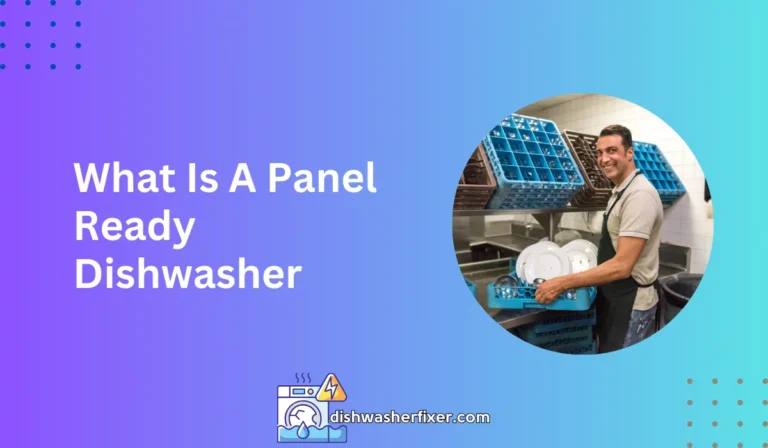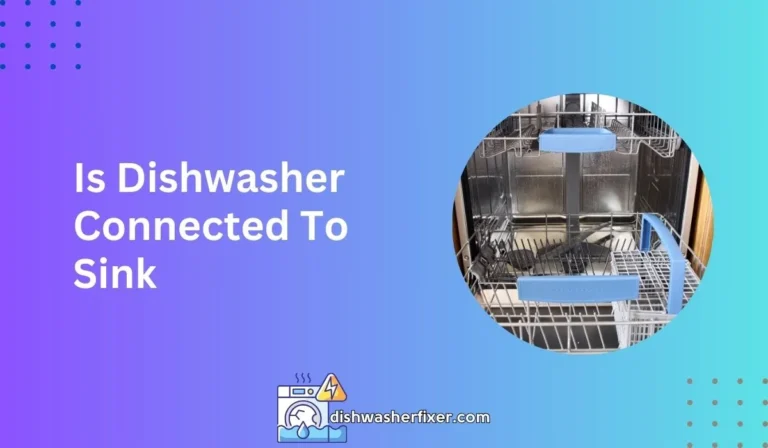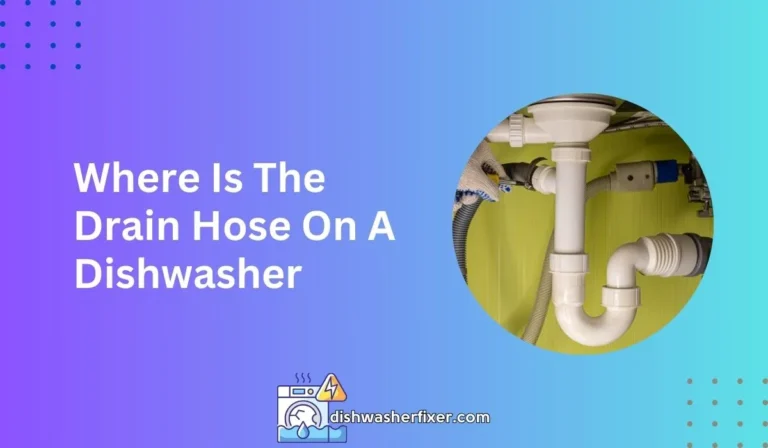How to Fix a Dishwasher That Won’t Start: Quick Solutions
Check the power source and ensure the dishwasher is plugged in. Reset the circuit breaker if necessary. Inspect the door latch for proper engagement. Consult the manual for model-specific reset procedures. If unresolved, a professional may need to assess electronic controls.
Check the Power Source
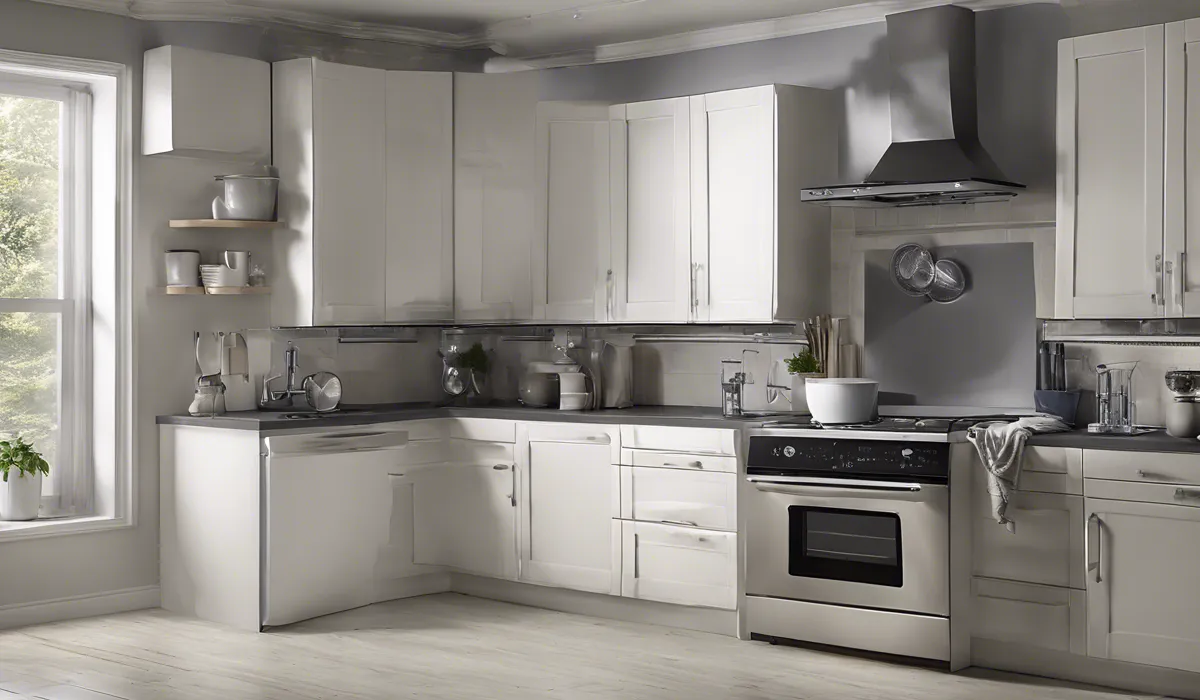
Ensuring Connection to Power Supply
Before diving into complex troubleshooting, the first step is to confirm that your dishwasher is, in fact, plugged in. It might seem obvious, but sometimes plugs can become loose or disconnected.
Gently push the plug into the outlet to ensure a secure connection. If the plug is not the issue, the problem may lie elsewhere in the power supply.
Assessing Circuit Breaker and Fuse Box
Occasionally, dishwashers cause a circuit breaker to trip or a fuse to blow. If your dishwasher won’t start, it is essential to check your home’s circuit breaker or fuse box.
Look for a switch that has moved to the ‘off’ position or a fuse that appears damaged. If you find a tripped breaker, flip it back to ‘on’ and attempt to start your dishwasher again.
Testing the Electrical Outlet
If there is no issue with the plug or circuit breaker, the next step is to test the outlet. Plug another appliance into the same outlet to see if it works.
If the other appliance also fails to work, the problem may be with the outlet itself, which will need to be examined by a qualified electrician.
Considering a Possible Power Outage
Power outages are another common reason why a dishwasher may not start. Check other appliances and lights in your home to determine if a power outage has occurred.
If you discover that the power is out, you will need to wait for the utility company to restore it before your dishwasher will function again.
Inspect the Door Latch and Control Panel

Verifying Door Closure and Latch Function
The door latch is a safety feature that prevents the dishwasher from running if the door is not properly closed. Make sure the door is fully closed and that the latch engages securely.
If you notice any resistance or if the latch does not click into place, there may be an obstruction or the latch may need adjustment or replacement.
Cleaning the Latch to Remove Obstructions
Over time, food particles and debris can accumulate around the latch, preventing it from functioning correctly.
Clean the area around the latch with a soft cloth to remove any obstructions. This simple step can sometimes resolve the issue without the need for further repairs.
Diagnosing Control Panel Issues
If the dishwasher door is latched correctly but the unit still won’t start, the next step is to examine the control panel.
Many dishwashers will display error codes or flashing lights that can help diagnose the problem. Consult your dishwasher’s manual to interpret these codes and understand what they mean for your specific model.
Resetting the Dishwasher
A simple reset can sometimes solve electronic issues. Turn off the dishwasher and disconnect it from the power source for a few minutes.
After waiting, reconnect the power and turn on the dishwasher. This can clear minor electronic glitches and may get your dishwasher working again.
Troubleshoot Common Component Failures
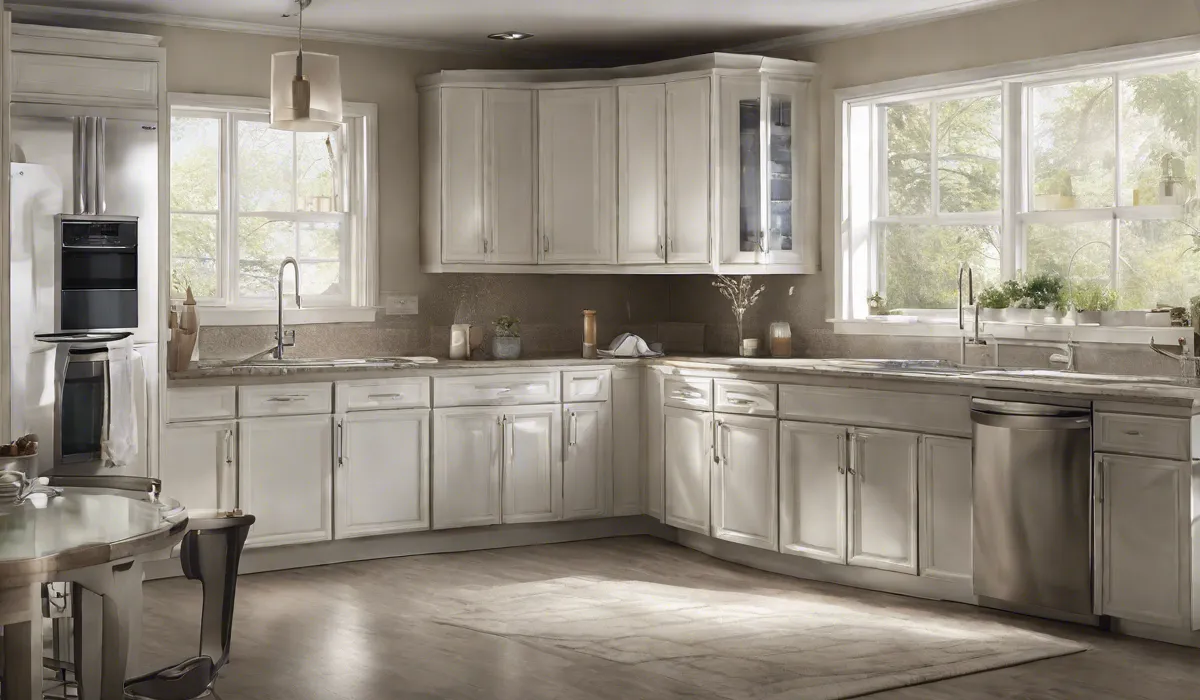
Checking the Door Switch
The door switch is a safety component that prevents the dishwasher from running when the door is open.
Use a multimeter to test the switch for continuity—a continuous electrical path. If the test shows no continuity, the door switch may be defective and will need replacement.
Evaluating Timer and Electronic Control
The timer or electronic control regulates the dishwasher’s cycles. If these components fail, the dishwasher won’t start.
Visually inspect these parts for any obvious signs of damage or wear. If they appear to be in good condition, a professional may need to assess their functionality with specialized tools.
Thermal Fuse Testing and Replacement
The thermal fuse protects the dishwasher from overheating. If the fuse has blown, it will stop power from reaching the dishwasher’s controls.
Test the thermal fuse for continuity using a multimeter. If it has blown, it’s a clear sign that it needs replacing. Remember to identify the root cause of the fuse blowing to prevent future occurrences.
Inspecting the Drive Motor and Start Relay
The drive motor powers the dishwasher’s spray arms, and the start relay helps the motor run. If either of these components fails, the dishwasher may not start.
Listen for a humming sound when you try to start the dishwasher, which can indicate a faulty motor or relay. A lack of noise could mean that the motor or relay isn’t receiving power, necessitating further investigation.
FAQs About Fixing a Dishwasher That Won’t Start
What should I check first if my dishwasher won’t start?
First, check the power source to ensure the dishwasher is properly plugged in and reset the circuit breaker if necessary.
How do I know if the door latch is the problem with my dishwasher?
Inspect the door latch to ensure it is properly engaging, as a faulty latch can prevent the dishwasher from starting.
Is there a way to reset my dishwasher if it won’t start?
Yes, consult your dishwasher’s manual for model-specific reset procedures, which often involve a sequence of button presses.
What should I do if my dishwasher still won’t start after checking the power source and door latch?
If the problem persists, you may need to contact a professional to assess and repair the electronic controls of the dishwasher.
Can I fix the electronic controls of my dishwasher on my own?
Repairing electronic controls can be complex and typically requires expertise, so it’s recommended to seek professional assistance.
Final Thoughts
To remedy a dishwasher that won’t start, check the power connection and confirm it’s plugged in. Reset the circuit breaker if it’s tripped. Make sure the door latch is properly engaged.
For model-specific instructions, refer to the manual’s reset procedures. Should these steps fail to resolve the issue, it may be necessary to have the electronic controls examined by a professional.
